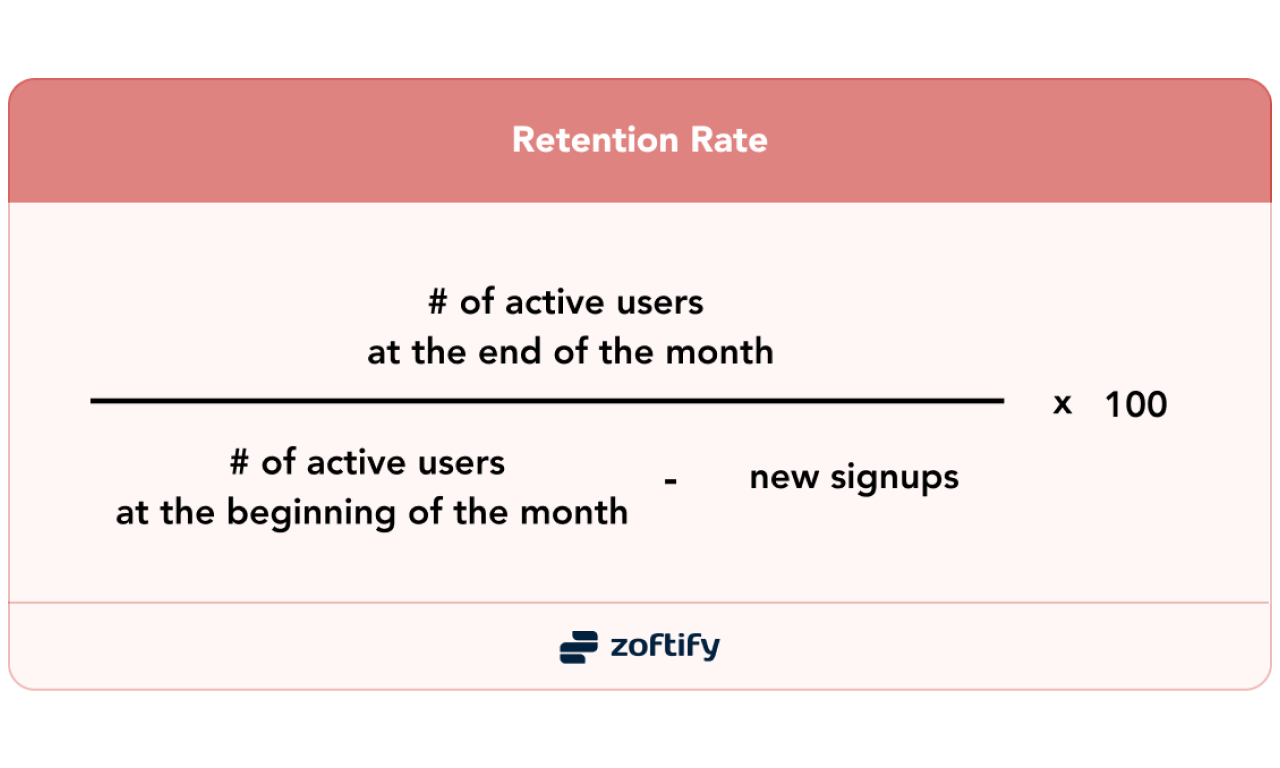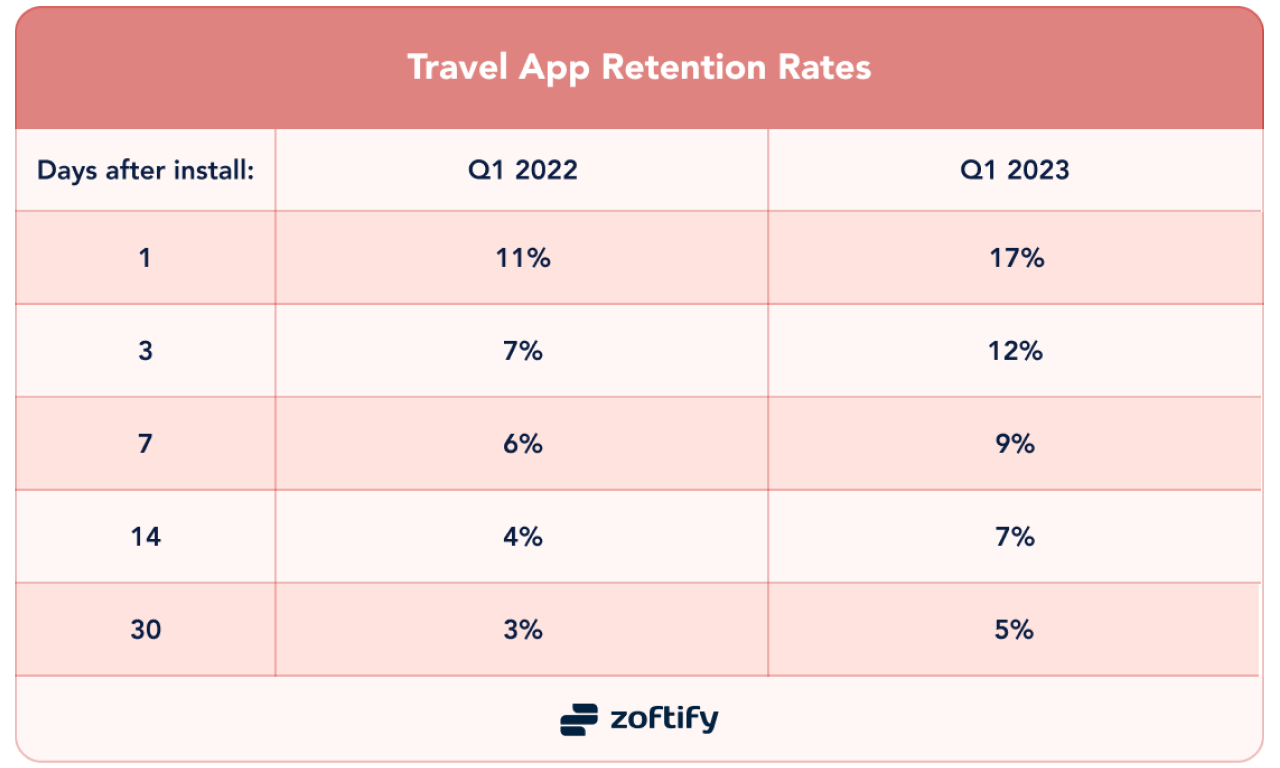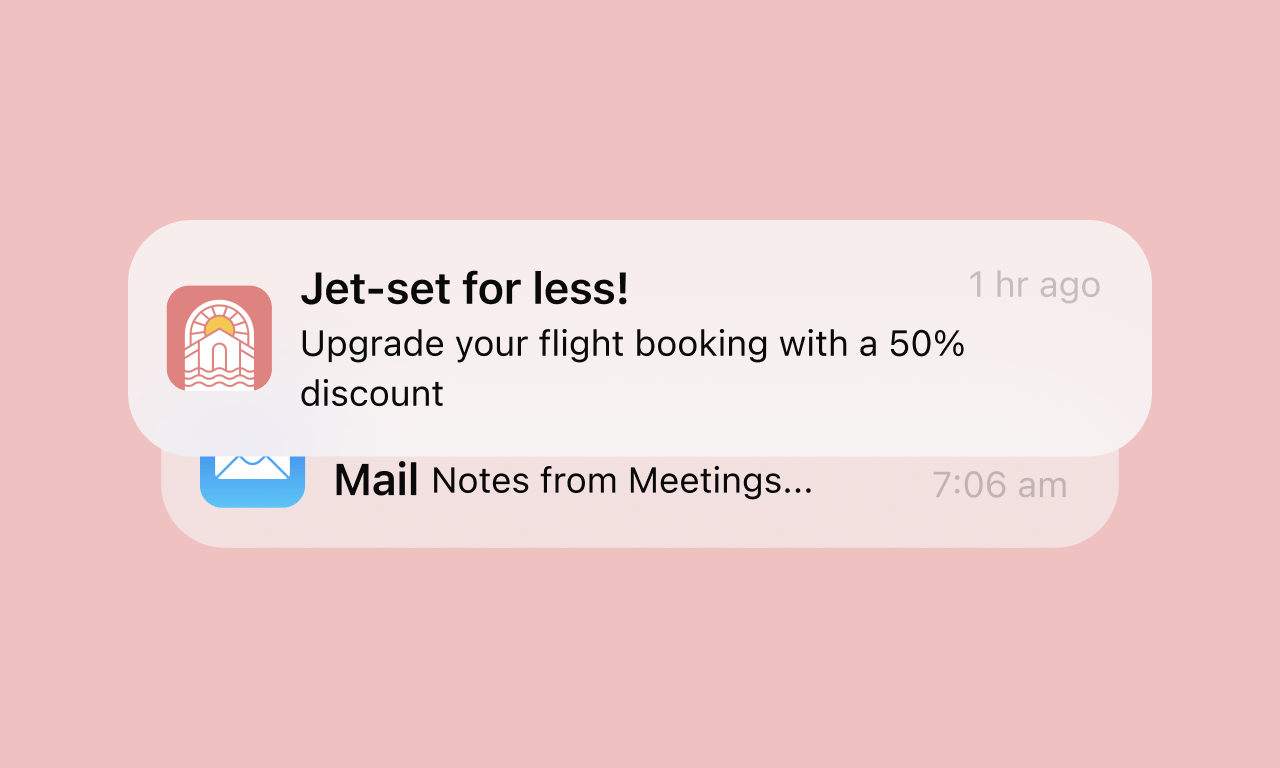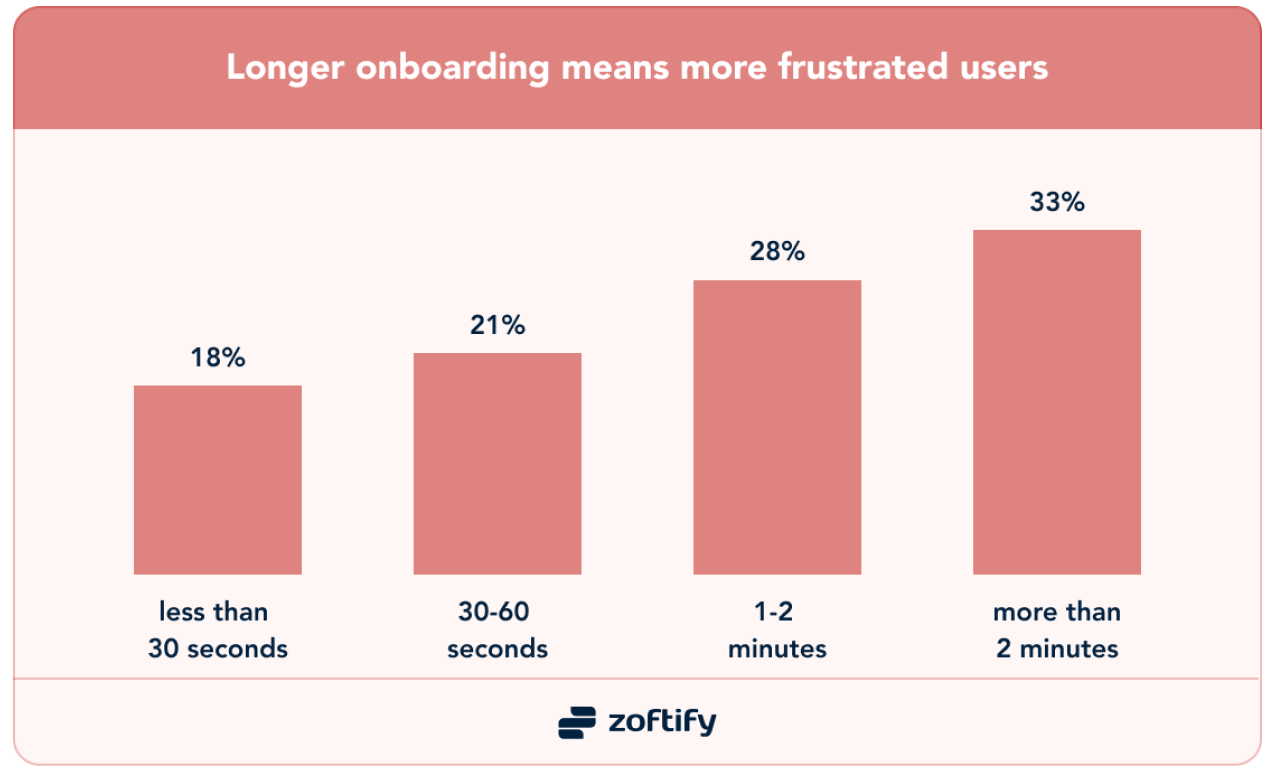7 ways to improve your travel app retention rate
Alex Ragin
Updated Nov 04, 2024 • 8 min read

You’ve partnered with travel app developers to create an app that helps people discover new places, find accommodation or holiday packages, and plan their perfect trips. Launch day comes, you get some buzz and a flurry of downloads, and then the numbers start to drop.
That’s a sign you need to look at your retention rate — a measure of how many people continue to use your app over a certain period of time. Improving your retention rate means keeping customers coming back to your app and engaging with it in the way you want them to.
In this article, we will show you how to competently calculate retention rate, what numbers you need to pull off, and how you can encourage travelers back to your app time and time again.
How to calculate travel app retention rate
To improve retention rate, you first need to know how to calculate it. The formula is pretty straightforward: take the number of active users at the end of a specific time period, divide it by the number of app users at the beginning of that period (minus new signups), and then multiply the result by 100.
You can choose any specific time period. For travel apps, 1 or 3 months is a good benchmark. The formula could look like this:

Now you have the formula, there are a few things to consider. First, you need to decide what counts as an “active” or “engaged” user. For travel apps, this can be tricky because there are some times when people may not need your app as much, like during the off-season when they’re not traveling. So, you need to think about what actions show that someone is actively using and finding value in the app. “Active” customers could be those who make bookings through your app, or use certain features within it.
The second thing to think about is how long the time period should be and when to track it. The travel industry is heavily dependent on patterns, seasons and specific events — there are times when, naturally, more or fewer people are traveling. Travel companies that focus on business travel may see their apps in constant use, while others get more engagement in peak seasons. The point is, you need to work out the right time period in which to measure tourism app retention rates, to get a true representation of your engagement. To do this, study your target audience and their travel behavior. You may need to look at monthly or quarterly periods to account for fluctuations in travel activity.
Thinking about how to increase travel app retention rates?
Zoftify can help you get the results you want. Book us now.
What is a good retention rate for my travel app?
What does a good retention rate look like? The truth is, there's no single number that qualifies as "good" for all apps. It really depends on your business model and goals.
The average retention rates of travel apps saw significant growth in Q1 2023 compared to the previous year, according to Adjust data based on various industry apps retention statistics. Let’s look at the graph for a better understanding:

As you can see, there was an impressive increase in first-day installs of six percentage points from 2022. Although the gap narrowed over the 30-day period, the retention rate on day 30 for Q1 2023 still finished two percentage points higher than the previous year.
While this data shows an overall increase in app engagement, it also shows how important it is to work on your retention rate. If your travel app gained 100 users on day 1, you might lose 83 of them the very next day. Then, you could lose another 5 of them by the end of the week, and another 7 by the end of the month, leaving you with a total of just 5 active users out of 100.
It’s also worth pointing out that travel apps generally have low retention rates in comparison to apps in other industries. For example, health and fitness app retention rates are much higher: the day 1 retention rate increased to 24% in 2023, up from 19%, and their day 30 retention rate increased from 3% to 7%.
So don't get discouraged if customer retention declines over time. Most apps will see a drop-off in usage after the initial surge of interest. As long as you maintain a steady base of engaged users — and continue optimizing your app and user experience based on usage data — you'll be in a good position. And remember, these retention rate statistics are just an average. It’s always good to aim for a user retention rate that is higher than the industry average.
How to increase the retention rate of a travel app
With the right product and the right approach, you can easily improve travel app engagement rates. Here are some tips on how to do it.
Improve UI/UX
To keep users coming back to your app, you need to make it enjoyable to use. Opt for a simple interface and make your app visually appealing with engaging images and minimal clutter. Arrange features and navigation logically. You should also conduct UX testing to identify any points of friction. The easier your app is to use, the more people will use it. To learn more, read our article about the importance of UI / UX design.
A/B testing
Try different versions of your app to see which one users prefer. You might want to compare different onboarding flows, menu layouts, or push notification schedules. See which variation gets the best feedback and retention. Then make changes accordingly. As described in our travel mobile app development requires constant optimization and improvement to keep your app fresh.
Send pushes and in-app messages
Push notifications are a great way to engage users, but only if done right. Send alerts about flight deals, hotel sales, or destination events based on users’ search history and interests. Make messages personal yet helpful. And don’t bombard people with too many notifications or they may turn them off or even uninstall your app altogether.

You can also send in-app messages to boost engagement. Since users are already inside the app, they are more likely to pay attention to what you have to say. To create effective in-app messages, keep them short and personalized and always include a clear call-to-action.
Simplify onboarding
A user’s first impression of your app is critical. Walk new users through the key features and settings in an interactive way. Explain how your app can benefit them with a short intro video or gif. Ask for their location data, home airport, interests and travel preferences to customize their experience.
But make it quick: a recent survey by Clutch showed that adding just one more minute to the onboarding process could frustrate 28% of users. This frustration rate increases to 33% when the onboarding time reaches two minutes. The longer the onboarding process, the more frustrated users become, so think about letting users skip onboarding entirely if they don't want guidance.

Personalize the experience
Use details like search history, frequently visited destinations and travel dates to tailor content for each user. Provide custom hotel, restaurant and activity recommendations based on their unique interests. Curate collections of editorial content, photos and videos on places they want to visit. The more you personalize the app, the less likely travelers will want to delete it.
Offer loyalty programs and rewards
When people ask us how to increase app retention, we always talk about incentives. Provide points or credits for every trip booked through the app that can be redeemed for discounts, upgrades or special perks. The more someone uses your app, the more rewards they’ll earn. Exclusive member-only promotions and flash sales are also a good way to show your loyal users some appreciation. Give travelers a reason to keep booking through your app.
Add useful tools and features
To boost retention rate for your travel app, give travelers tools and features that simplify trip planning and make their journey easier. Let them see past bookings and browse new tours. Add tools like currency converters, luggage sizers, packing lists, weather data, flight trackers, and airport guides. Let people book and pay for their trips via Apple Pay, Google Pay or even cryptocurrencies. The more useful app features you offer, the more valuable it becomes to users.
Final thoughts
So now that you’ve learned about ways to improve travel app retention rate, it’s time to get to work. Implement a few of these app retention strategies and watch your numbers rise over the next few months. Keep tweaking and testing to find what resonates most with your audience. When you build something that provides real value, users will always stick around.
Is your app performing poorly? Are you losing users?
Reach out to us for free, no-commitment advice.
Related articles
Alex loves travel and tech and founded Zoftify to help travel companies use technology more effectively. Before this, he worked in tech consulting, where he led international mobile development teams.
184 (68)